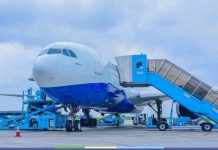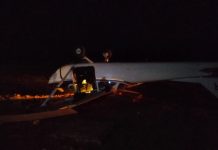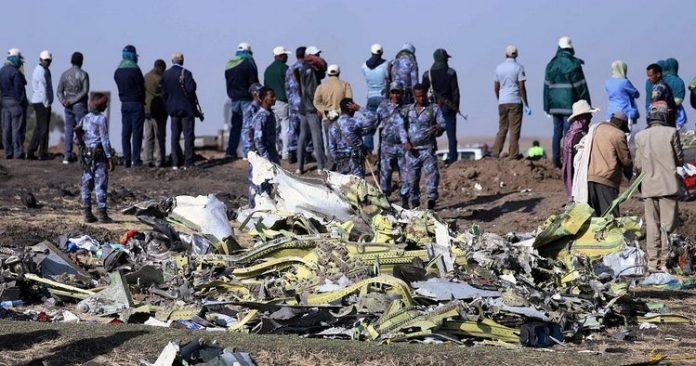An Ethiopian Airlines flight 302 registered ET-AVJ in the early hours of March 10, 2019 claimed the lives of all 157 lives on board when the plane crashed six minutes after takeoff, including two Nigerians.
The Nairobi- bound Boeing 737 Max Flight 302 took off from Addis Ababa airport and almost immediately had the pilots reporting problems with the plane and asked for permission to return to the airport. The only tragic was that they never made it.
The plane was captained by 29-year old Yared Getachew, the youngest captain at Ethiopian Airlines who has logged a total of 8,122 flight hours. The first officer, a recent graduate of the airline’s academy was 25-year old Ahmed Nur Mohammod Nur.
Despite frantic efforts by the captain and first officer to control the plane, it nose-dived into a barren patch of land about 40 miles from Addis Ababa.
The ET302 crash occurred just five months after Indonesia’s Lion Air Boeing 737 Max crashed killing all 189 people on board. The Ethiopian Airlines crashed further raised people’s suspicion about the particular model under review, as it would later be insinuated that both crashed under similar instances- nose diving before crash. Even though diverse factors were said to be responsible for the two crashes, malfunctions related to automated software known as MCAS were listed as key in both accidents.
The Ethiopian Airlines crash led to a wake up call leading to the grounding of over 380 Boeing 737 Max jets used by more than 50 airlines all over the world. This had a significant effect on the manufacturer leading to a the grounding of the 737 Max and loss of billions of dollars. The manufacturer projected nearly $19 billion in costs related to the grounding of Max jets and has also cut down production of its bigger 787 Dreamliner aircraft.
It is important to know the cause of accident is still under investigation even though an interim report was released earlier in the week.
The report released by Ethiopian government almost a year after the incident stated that erroneous sensor readings activated the MCAS anti-stall system, which pushed the jet towards the ground.
Last week, a preliminary report by the U.S. House Committee on Transportation and Infrastructure said that production pressures and a “culture of concealment” at Boeing had contributed to both plane crashes. The report also found a conflict of interest with regard to oversight, highlighting instances in which Boeing employees responsible for representing the F.A.A.’s interest “failed to take appropriate actions” to safeguard passengers on commercial flights. (The New York Times)
On Tuesday, Ethiopian Airlines marked the one-year anniversary of the crash of Flight 302 by bringing relatives of the dead together for a ceremony at the crash site southeast of the capital, Addis Ababa.
The story one year after is that the report from the accident is yet to be concluded. Even though in July Boeing announced that it has set aside $50 million in financial assistance to the families of more than 300 victims of the two 737 Max crashes, it is unsure if any of the family has received payment.
















